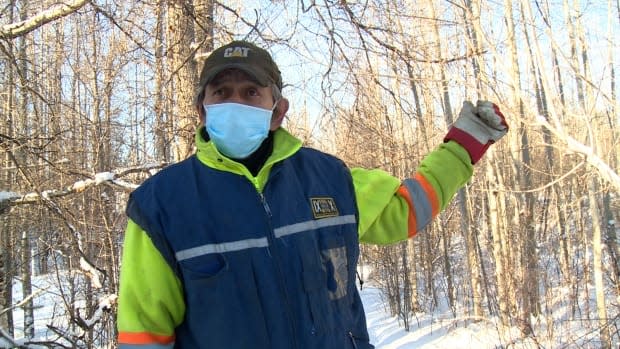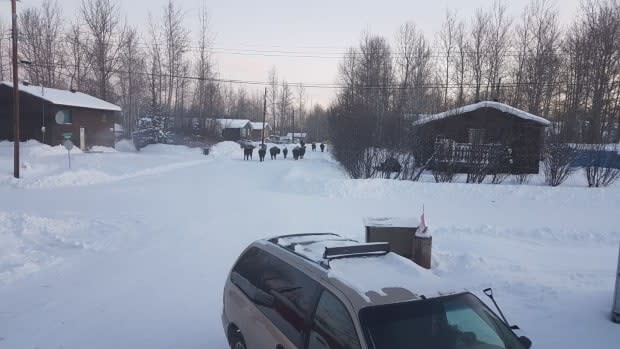'They shouldn't be in the community': Fort Liard resident sounds alarm over bison herds

One Fort Liard, N.W.T., resident is asking the territory to control the area's bison population before someone gets hurt, after hearing about a deadly encounter with the animal last year in Yukon.
Bison were introduced to Fort Liard in 1980, as part of the territory's strategy to revive the endangered species.
Resident John Gonet said the animals have been running wild in the hamlet ever since, taking over public spaces like the schoolyard or the airport landing strip.
"They shouldn't be in the community," Gonet told CBC. "A buffalo is a wild animal."
Gonet said residents of the hamlet have asked the territory and their MLAs to intervene for decades, but very little has been done to mitigate the problem.
Now, after reading about a deadly encounter with bison last year in Yukon, he said it's finally time for the government to step in — before someone gets hurt.
"That's probably what it will take, for someone to get hurt or killed," Gonet said. "It's very, very frustrating — so I hope they do something about it."
Bison considered 'threatened' species in N.W.T.
The bison issue has changed some aspects of Gonet and his family's home life.
Gonet used to build a snow slide for his five-year-old grandson every winter, but stopped doing so when he realized herds of buffalo crossed through his backyard.
"[My grandson] is too scared to come out here, when there's 2,500 pound animals [nearby]," Gonet said.

Gonet said people are constantly watching to make sure bison are not crossing through their yards before going outside, because it would be difficult to fend off the animal.
Since 2016, wood bison have been listed as "threatened" on the territory's list of species at risk, and under federal bodies including the Committee on the Status of Endangered Wildlife in Canada (COSEWIC) and the Canadian Species at Risk Act.
One of the risks to wood bison, according to the N.W.T.'s website, is conflicts between humans and bison due to a "lack of public acceptance in some areas."
No threat to community, N.W.T. says
Julien Sabourin, a renewable resource officer with the territory's Department of Environment and Natural Resources (ENR), said bison in the Liard Valley often wander into Fort Liard because they see it as a sanctuary from their predators, like wolves.
Sabourin says they don't pose any threat to the community.
"People in Fort Liard, they're pretty good at respecting the bison," he said. "Usually bison are afraid of people as well."
Fort Liard has a local ENR officer, who chases out bison after getting complaints from people in town. Sabourin said it depends how often the officer responds to these calls, but it can happen "weekly".
Last year, the department teamed up with local hunters who have the appropriate tags to harvest bison closer to the hamlet's limits. What that does, Saboruin continued, is it lets bison know that the hamlet is less of a safe haven for them, driving them further away.
Sabourin said the hunt was successful, and there could be plans to do another one in the future.
A 2019 management strategy created by the territory to manage the Nahanni herd also suggests the creation of a "diversion habitat" to drive bison out of the hamlet.
Sabourin said this project is being looked into, but there is no timeline yet for when it will be put in place.
Meanwhile, the department's biologists are just finishing a survey recording the size of the Nahanni herd.
Once the department has a population estimate, Sabourin continued, they might consider giving more tags to hunters as a means to regulate the population.

